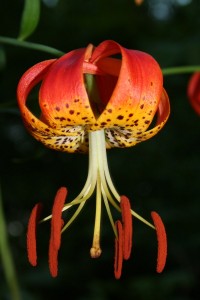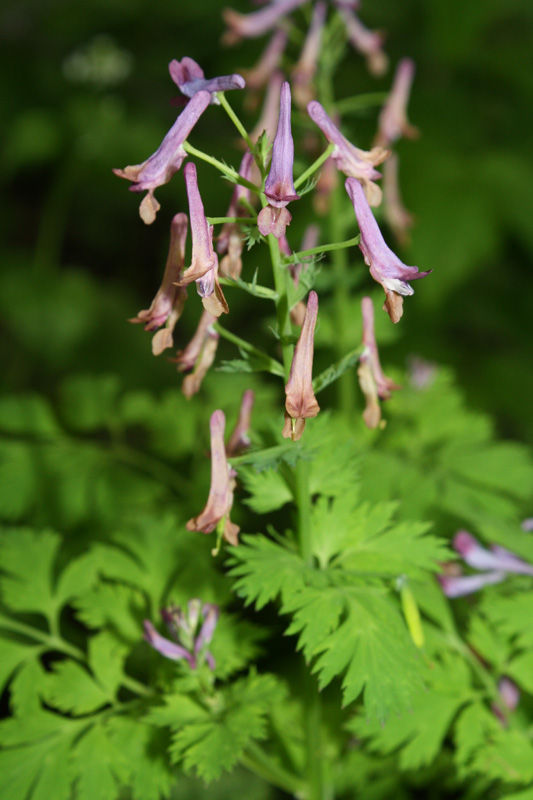Advances in Botany Call for Update of Regional Manual
Posted in Science on April 1 2010, by Plant Talk
Garden Scientist Talk Reveals What’s New in Northeastern N. America
 Robert Naczi, Ph.D., is Curator of North American Botany.
Robert Naczi, Ph.D., is Curator of North American Botany.
 Since its founding in 1891, The New York Botanical Garden has been a center of scientific study of the plant life of northeastern North America. Generations of Garden scientists have been active in writing books that aid in the identification of plants that grow spontaneously within this vast region, which extends from Nova Scotia west to Minnesota, and south to Virginia and northern Missouri (more than 25 percent of the area of the contiguous United States). This region hosts about 5,000 species, including many that are essential for a healthy environment, economically important, and quite beautiful, such as Lilium superbum (turk’s-cap lily, pictured here).
Since its founding in 1891, The New York Botanical Garden has been a center of scientific study of the plant life of northeastern North America. Generations of Garden scientists have been active in writing books that aid in the identification of plants that grow spontaneously within this vast region, which extends from Nova Scotia west to Minnesota, and south to Virginia and northern Missouri (more than 25 percent of the area of the contiguous United States). This region hosts about 5,000 species, including many that are essential for a healthy environment, economically important, and quite beautiful, such as Lilium superbum (turk’s-cap lily, pictured here).
The most recent book on the subject is Manual of Vascular Plants of Northeastern United States and Adjacent Canada by Henry A. Gleason and Arthur Cronquist (1991, The New York Botanical Garden Press; also available electronically). Professors, students, land managers, conservationists, and gardeners universally regard it as an indispensable reference. Advances in botany since 1991 have made a major revision of the Manual an obvious necessity.
Three kinds of advances in botanical knowledge make the update timely. First, research in molecular and morphologic systematics has brought a better understanding of relationships among plants. This research has enabled botanists to refine the classifications of plants, sometimes necessitating major reorganization of their families and genera.
Second, species-level research has advanced, too. Even in the relatively well-known Northeast, species new to science continue to be discovered, adding to the already rich flora of the region.
 Third, field work reveals increases in the number of non-native plants that now grow in this region. Of greatest concern are those non-natives that become invasive. For example, Corydalis incisa (cut-leaved corydalis, pictured here) a recent introduction from eastern Asia, is established in southeastern New York. Field research last spring showed this species is locally common and spreading, causing concern that it may soon become invasive.
Third, field work reveals increases in the number of non-native plants that now grow in this region. Of greatest concern are those non-natives that become invasive. For example, Corydalis incisa (cut-leaved corydalis, pictured here) a recent introduction from eastern Asia, is established in southeastern New York. Field research last spring showed this species is locally common and spreading, causing concern that it may soon become invasive.
I am leading the ambitious task of updating the Manual of Vascular Plants of northeastern North America. Through this work, I am conducting original research and coordinating the efforts of several botanists who are immersed in the identification, geographic distribution, frequency, ecology, and conservation of the wild plants of the region.
Dr. Rob Naczi will discuss the project at a free Torrey Botanical Society lecture, The Flora of the Northeastern U.S.A. and Adjacent Canada: Advancing the Legacy, on Tuesday, April 6, at 6:30 p.m. in the Arthur and Janet Ross Lecture Hall at the Botanical Garden.

